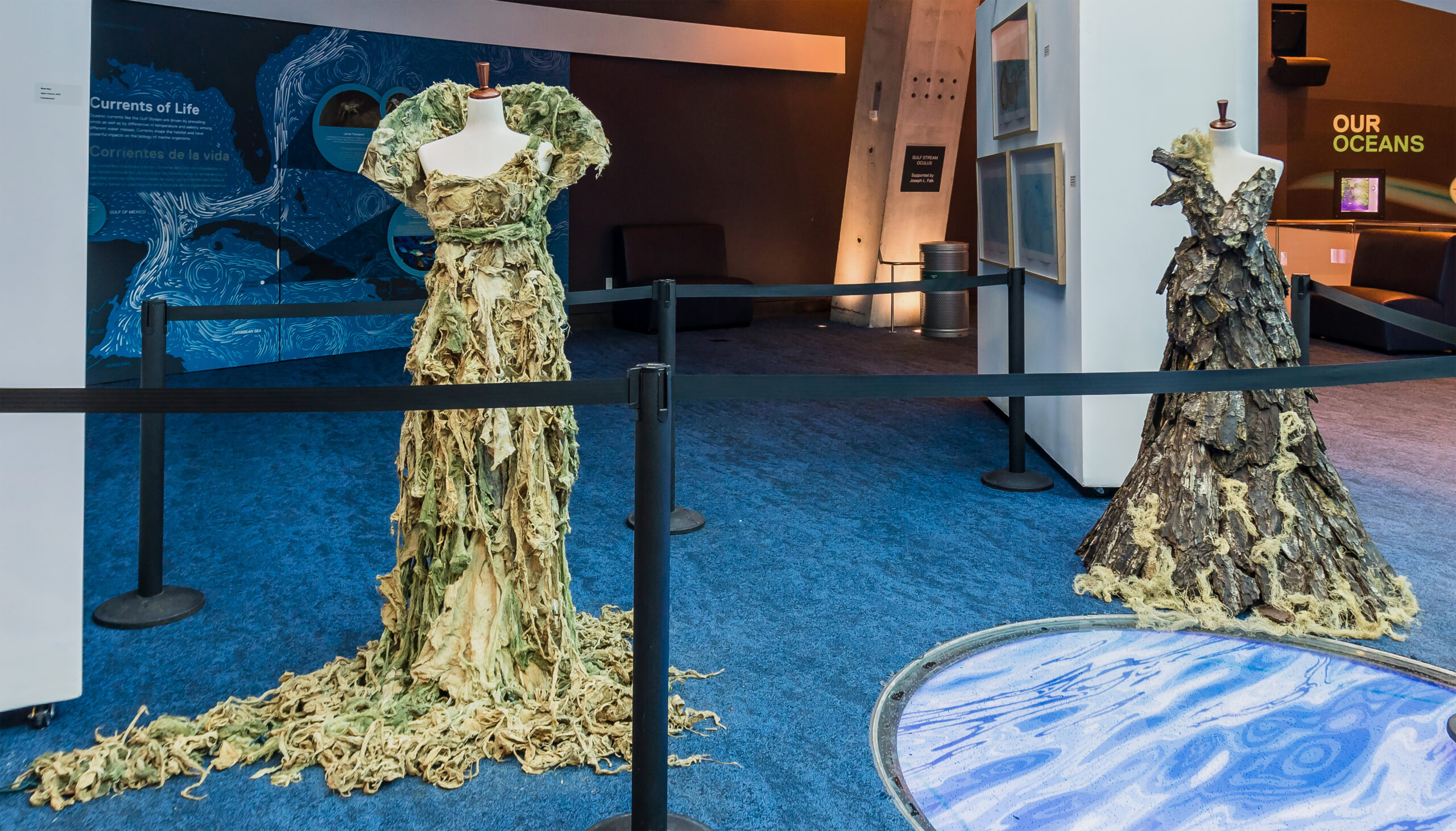
Biocouture: Are Aquatic Plants the Future of Sustainable Fashion?
By Runa Ray
Sign up for our monthly newsletter!
The fashion industry, once a captivating realm of allure and creativity, has unveiled a trove of hidden secrets, exposing a disconcerting tale of wastefulness and a glaring lack of transparency. I am a sustainable luxury fashion designer, and this revelation plunged me into a profound dilemma, caught between the industry’s enchanting beauty and the pervasive decay it inflicts upon the world.
With a staggering market valuation of $3 trillion, the fashion industry stands as a formidable contributor to environmental degradation. A startling 20% of global wastewater is attributed to its intricate processes, encompassing textile dyeing and overall production. At the forefront of its environmental transgressions is the pervasive use of plastics, a faux pas that spans from packaging and hangers to tags and mannequins.
Fashion Production Growth
Since the 2000s, fashion production has doubled and is projected to triple by 2050. This increase in production not only amplifies the industry’s carbon footprint but also exacerbates other environmental impacts.
Plastics, omnipresent in the industry, culminate in a concerning trail of waste destined for landfills, eventually fragmenting into bits that infiltrate our oceans. Fast fashion bears the brunt of this environmental travesty, primarily due to its reliance on cheap synthetics that shed microfibers with every wash.
These microfibers, microscopic particles released during the washing of synthetic clothes, pose a grave threat to our waterways. Infiltrating delicate ecosystems disrupts the marine food chain, endangering the very species upon which it relies. Researchers globally, armed with microscopes, scrutinize the impact of these minute plastic particles on aquatic life—wild-caught and farmed—revealing a distressing reality where over half of these microplastics end up on our dinner plates.
The herculean challenge of plastic pollution necessitates a decisive response—an imperative to eliminate it. Even the seemingly noble act of plastic recycling is marred by the production of dangerous byproducts, perpetuating the environmental burden as plastic continues to persist on our planet.
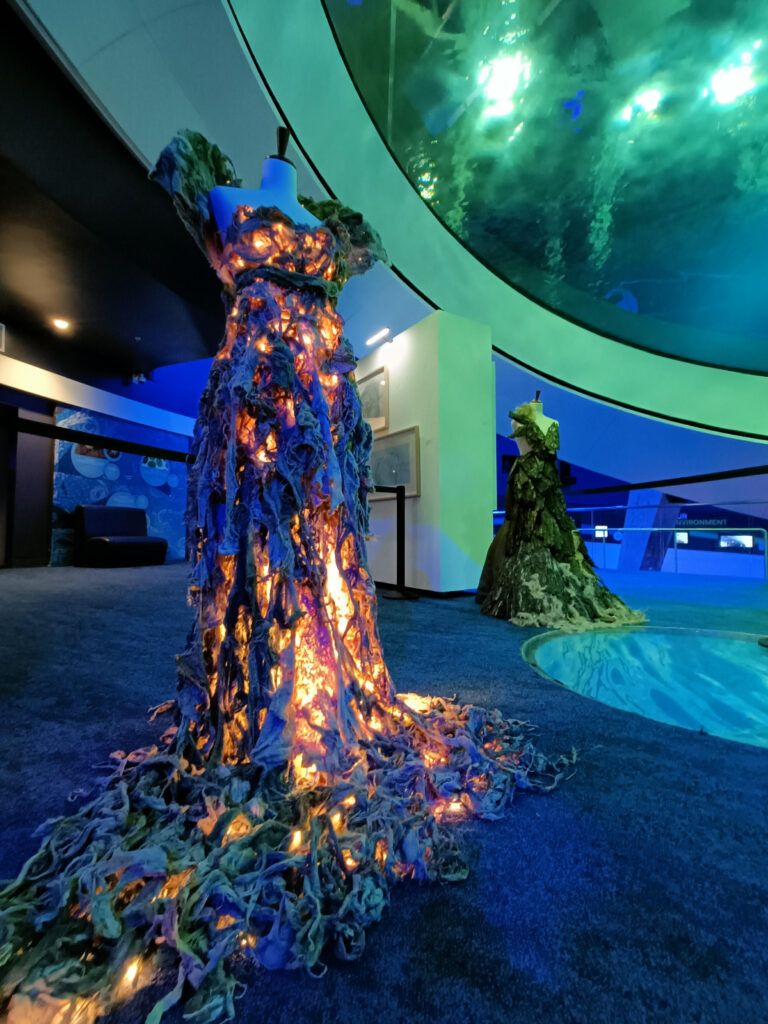
In confronting the dire consequences of the fashion industry’s environmental footprint, a paradigm shift beckons—one that champions sustainability and demands a departure from the pervasive use of plastics. It is time for the industry to reinvent itself, adopting practices that embrace environmental responsibility and propel us toward a future where the dichotomy between beauty and decay no longer defines fashion’s legacy.
Embracing a commitment to environmental justice, my journey as a designer has been fueled by a profound belief that designs should not only reflect the beauty of the present but also convey a resounding message of hope amidst the pressing issues of climate change. This perspective inherently aligns with the essence of the three R’s—reduce, reuse, and recycle—a guiding principle that underscores my design philosophy.
In this pursuit of sustainability, it becomes imperative to reimagine alternatives to the ubiquitous use of plastics in the fashion industry.
Aquatic plants, once overlooked in traditional textile production, are gaining attention as a promising and eco-friendly alternative. These plants, which thrive in water environments such as ponds, lakes, and wetlands, exhibit qualities that make them suitable for textile applications.
Several aquatic plant species have shown potential for textile production. Examples include water hyacinth, lotus, seagrass, and various types of algae. Each plant possesses unique characteristics that contribute to its suitability for textile use and are renewable resources, often growing rapidly in water ecosystems. Their cultivation can be managed sustainably, minimizing environmental impact.
Water Consumption and Pollution
The fashion industry is one of the world’s largest users of water, with consumption estimates ranging from 20 trillion liters upwards. This immense water usage is particularly concerning given the already strained water resources in many parts of the world. Additionally, the industry is known for polluting water sources. For instance, washing certain types of clothes releases significant amounts of micro plastics into the ocean, contributing to marine pollution.
A compelling prospect emerges in the form of cyanobacteria, colloquially known as Blue-Green Algae. These microscopic organisms, revered as one of the world’s earliest oxygen producers and recognized as living fossils, inhabit diverse water environments, including fresh, brackish, and marine water.
Harnessing the power of sunlight for sustenance, cyanobacteria possess a unique adaptability that allows them to thrive in warm, nutrient-rich environments abundant in phosphorus and nitrogen. Under these conditions, cyanobacteria can swiftly multiply, forming blooms that gracefully spread across the water’s surface.
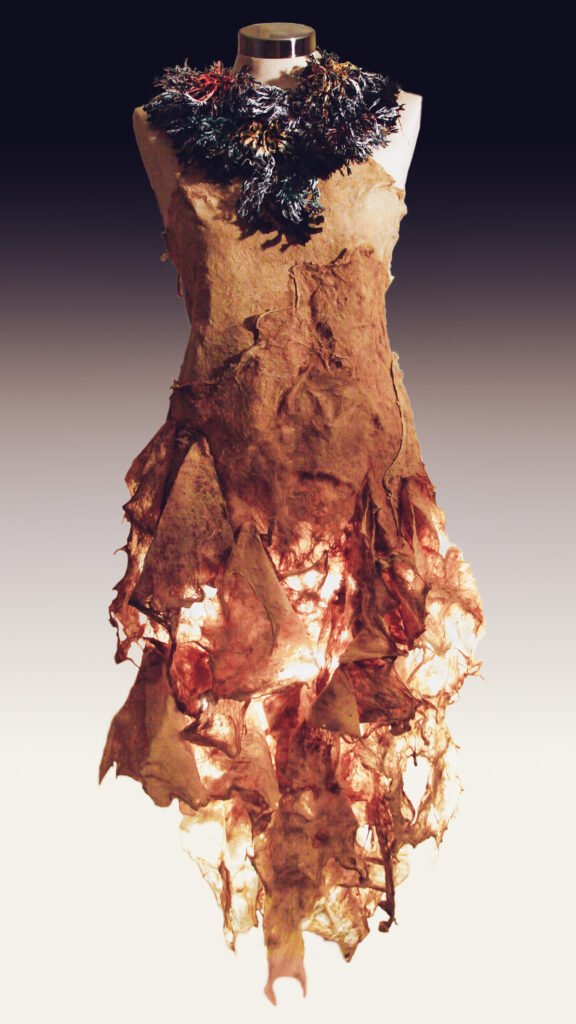
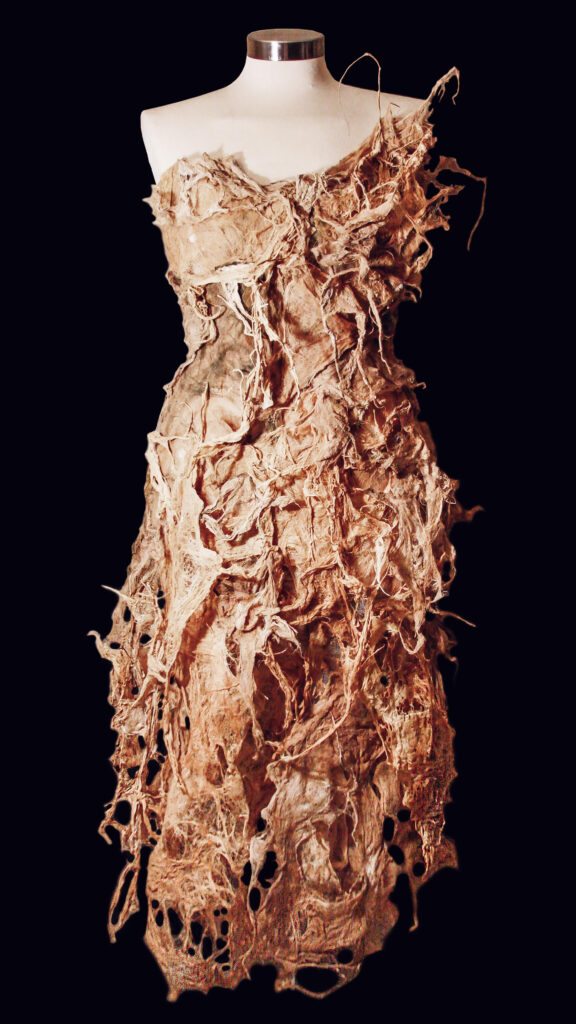
The potential of cyanobacteria as an alternative to plastics holds transformative promise. By integrating these naturally occurring organisms into the fabric of fashion, we can pave the way for regenerative textiles that embody both ecological responsibility and innovative design. This paradigm shift not only aligns with the principles of sustainability but also serves as a testament to the remarkable adaptability and resilience found in the living world. As we reimagine our approach to materials, cyanobacteria emerge as a beacon of inspiration, symbolizing a harmonious fusion of creativity, science, and environmental stewardship in the realm of fashion.
Cyanobacteria, often overlooked for its versatility, emerges as a remarkable alternative to traditional textiles and plastics. Not only is it fire-resistant and highly absorbent, but its potential as a source for nitrogen fixation in the soil makes it an asset for sustainable agriculture in biodegradable packaging. As a regenerative textile, it offers a compelling solution to displace plastic, addressing the environmental concerns associated with conventional materials.
Unlike water-intensive and land-consuming alternatives, cyanobacteria stand out for its efficiency in resource utilization. This microorganism, harnessing the power of sunlight, can be cultivated in diverse environments, making it a feasible and eco-friendly option for textile production.
Carbon Emissions
The fashion industry is a major contributor to global carbon emissions. It emits more carbon than international flights and maritime shipping combined, which is a startling indicator of its environmental footprint. The industry is responsible for approximately 8-10% of global CO2 emissions, highlighting the substantial impact of its operations on climate change.
In the innovative process of transforming cyanobacteria into textiles, each piece undergoes meticulous purification, ensuring the removal of impurities. These purified strands are then expertly sculpted to create garments that transcend traditional fashion. The resulting dresses possess a unique aesthetic, with fabric that subtly adopts a faded and washed coloration from exposure to the sun.
What sets these garments apart is their living essence—they are organic, soft, and dynamic, mirroring the vibrancy of the algae from which they originate. This transformative innovation not only presents a regenerative choice but also challenges preconceived notions about textiles, inviting us to reimagine algae as a dynamic and sustainable source for the fashion industry.
With this paradigm-shifting approach, we introduce a regenerative alternative to plastic, emphasizing the living nature of the garments crafted from cyanobacteria. In embracing this innovation, we strive to redefine the boundaries of sustainable fashion, demonstrating that the fusion of science and creativity can lead to a harmonious and environmentally conscious future.
Coastal communities, predominantly in the global south, grapple with environmental racism and a diminishing trade landscape due to overfishing from commercial fishing lines. The livelihoods of many families hinge on the ocean, making it crucial to introduce alternative trades that incorporate nature-based solutions in fashion. By engaging women and families in these communities, not only can they benefit from the fashion industry, but also cultivate their creativity while preserving their traditional fishing practices.
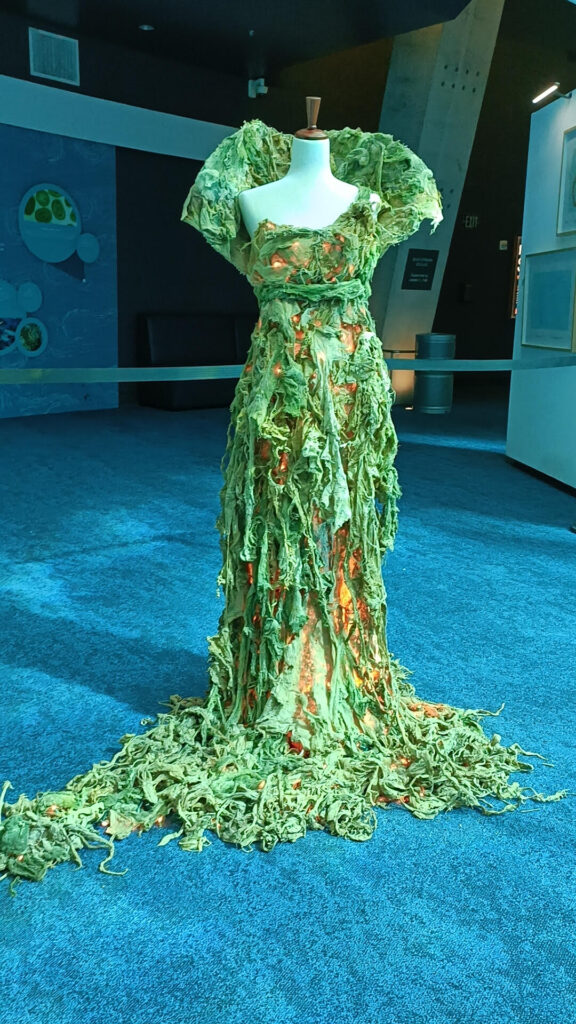
Recognizing the influential reach of the fashion industry, there is a pressing need to disseminate critical knowledge. This outreach extends beyond informing the global community about climate change; it involves delineating actionable steps for climate action, thereby fostering a sense of responsibility and awareness.
Amidst this, the industry is undergoing a transformative shift with the exploration of regenerative textiles. Through experiments with biofilms and yarn derived from less water-intensive crops, the fashion sector is actively embracing sustainable practices. This interdisciplinary approach, marrying elements of science with the artistry of fashion, serves as a platform to educate the public about the adverse effects of plastics and fast fashion, both contributors to biodiversity loss. It also introduces revolutionary methods for conscientious harvesting and nurturing of nature, emphasizing the importance of giving back to the environment.
Waste Generation
A significant portion of produced textiles ends up as waste. Approximately 85% of all textiles go to the dump each year, which is a stark reflection of the industry’s contribution to global waste problems.
Fashion, with its extensive outreach, comprises a diverse chorus of voices, encompassing growers, manufacturers, designers, and consumers. In this collective endeavor, people worldwide must advocate for the right choices—choices that reflect an understanding of the intricate connections between fashion, the environment, and communities.
As the textile industry seeks more sustainable alternatives, aquatic plants emerge as a promising option. By harnessing the unique properties of these plants, researchers and industry professionals are exploring innovative ways to create textiles that are not only environmentally friendly but also offer distinctive qualities appealing to a growing market of eco-conscious consumers. Aquatic plant fibers can be processed into various textures and forms, allowing for a wide range of textile applications, including clothing, accessories, and even home textiles. Research and development are ongoing to enhance the strength and longevity of these materials.
It is time for a unified voice—one that resonates locally, internationally, and nationally. By coming together, we can steer the fashion industry toward sustainable practices, empowering coastal communities and influencing a positive change that transcends borders. This shared commitment to responsible choices serves as a beacon of hope, illustrating the transformative potential of a collective voice in shaping the future of fashion and environmental stewardship.
Runa Ray is a sustainable fashion designer and activist who creates for blue and green economies and uses algae-based fabric in her creations. She works with the United Nations to promote the sustainable fashion industry. Follow her @runaray and http://www.runaray.com Email her at contact@runaray.com
Plantings
Issue 30 – December 2023
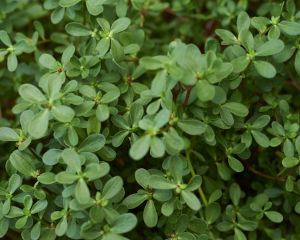
Viriditas: Musings on Magical Plants: Portulaca oleracea
By Margaux Crump
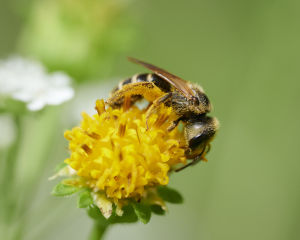
Proboscis, Pollen, and the Rapture of Interspecies Intimacy
By Jake Eshelman
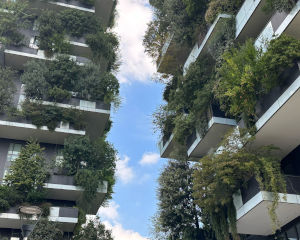
The Greening of Milan: Porta Nuova and Vertical Forest
By Gayil Nalls
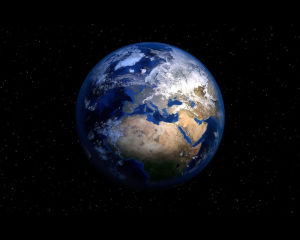
Overshooting Earth’s Boundaries: An Interview with Bill Rees
By Rachel Donald
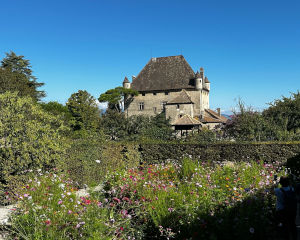
The Garden of the Five Senses
By Gayil Nalls

Eat More Plants Recipes:
Le Botaniste’s Fennel, Tomato, and Red Pepper Pasta Sauce

As Ireland transitions from the rich, smoky scent of peat-burning to a more sustainable future, its olfactory heritage is evolving. What will become the next iconic aromatic symbol of Ireland?
Click to watch the documentary trailer.


